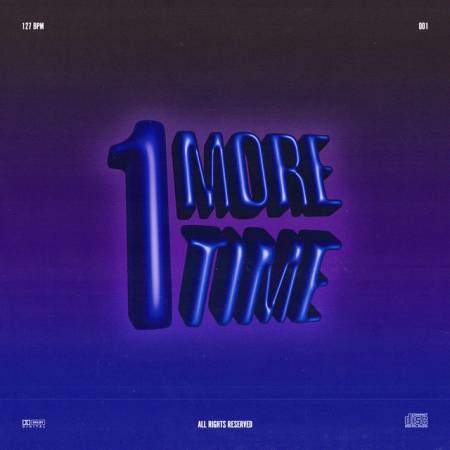Every couple of years there is a novel sub-genre that infiltrates the clubs, the musical blogosphere, and the streets (depending on where you’re from). And it’s not unusual for novel sub-genres to be welcomed with a ‘fad tag’ by music critics. This was the case with lo-fi house back in 2016. This is a genre that gained fandom through the internet and gradually became the “all-permeating sound of the underground” according to FACT Magazine. Part of the reason isn’t even because of the music itself, but because of the artist names and the subjectively cheap aesthetic.
What is Lo-fi house?
Well, the definition is all in the name… The core nature of lofi is characterized by low fidelity. And this relates to production quality that is somewhat shoddy, including the abstinence from polish and sheen. Ultimately, lo-fi house is the prevalence of distortion, fuzz, drums laden with dirt, and cassette emulation over a house beat (usually 4/4) to capture minimalism and a more of a vintage aesthetic. That’s looking at it from a technical aspect though. The attitude propelling the genre cannot escape mention as many of the key figures in lo-fi house seem to present their brand in a manner which is “quirky” to say the least. Overall this gives bystanders the impression of a movement which deliberately doesn’t take itself too seriously – something we’ll delve into in the coming sections.
History of Lo-fi House
The fascinating thing of lo-fi hip hop and lo-fi house both gaining momentum around the late 2010s, is the fact that hip hop and house respectively started off as lo-fi. If you listen to some of the earliest house tracks such as the one below, the similarities between the house of yesteryears and contemporary lo-fi house are quite evident.
“I do it because I’ve gained a real love for the old school sound, where it really just sounds worn-out and knackered, and it’s got a lot of character. Everything’s very crushed and compressed.”
That’s a quote from lo-fi house extraordinaire Ross from Friends in an interview with Bandcamp, ultimately representing the fascination that some lo-fi house artists have for old school house; to the point of emulation through their own craft.
Something to keep in mind is that the genre is a web-based phenomenon that started online and gradually leaked into the streets, bars, and clubs due to its internet virility. Even though there isn’t a distinct genesis that we can pinpoint, there are murmurs that lo-fi house arose out of defiance – a defiance of the gloss laden all throughout various forms of contemporary house but in the shape of murky machine warmth.
Stay up to date.
New music and exclusive updates in your inbox weekly.
Lo-Fi House Artists
Apart from the individual brilliance of artists, something which also heightened the popularity of Lo-Fi House was the commotion surrounding the ‘peculiar’ artist names in the scene. I’m talking about monikers like DJ Poolboi, DJ Sports, DJ Bus Replacement Service, and of course DJ Boring. Personally, I think is hilarious and it’s lovely to see artist who don’t outright take names seriously. But what this tends to be perceived as is artists who don’t take their craft seriously, which leads to critics and listeners not taking the music seriously, thus nurturing a dismissive attitude towards the genre. This could be part of the reason why lo-fi house was regarded as a fad when it first started out. But it’s clear that time has proven critics wrong as the quality and the gravitational appeal of the music speaks for itself.
Below are some of the artists who are considered vital in the rise of the movement.
Ross from Friends
My first ever introduction to this side of House music was when I discovered “Talk to Me You’ll Understand” by Ross From Friends; a single with an infectious rhythm accompanied by fuzzy textures (of course) that lavishly enriches the stereo field. As mentioned above Ross clearly borrows from the early years of house music, which actually raises the question of his reliance on nostalgia. The massive success of “Talk To Me You’ll Understand” and his following works such as “Don’t Sleep, There Are Snakes” led up to his debut album Family Portraits released under Flylo’s Brainfeeder Label. Family Portraits allowed him to parade his distinct brand of Lofi through touring – even playing at Panaroma Bar and Primavera.
DJ Boring
A conversation about lo-fi house isn’t complete without mentioning DJ Boring’s “Winona”. The bare-boned minimalism, the repetition and the atmospheric allure possess an entrancing feel throughout the track. According to the event listings on Resident Advisor, the Australian DJ played just one show in 2018 even after “Winona” was gaining traction online. The next year, his amount of performances skyrocketed to 69. Make no mistake though, if you take a listen to DJ Boring’s latest works it’s clear he’s transcended the limiting realms of genre. In an interview with Purple Sneakers he stated, “Once I had a promoter come up to me mid set and asked me when I was going to play lo-fi music". I said, "Probably not."
DJ Seinfeld
Even though DJ Seinfeld had the hit “U” under his name, it wasn’t entirely a case of a single track going viral which led to his rise. He initially started DJ Seinfeld as a temporary side project, but it took on a life of its own toward the end of 2016, when the Season 1 EP was released by label Lobster Theremin. It was more so the versatility displayed throughout the range of EP’s and album he released which blurred the lines of lo-fi house.
The real-life presentation of lo-fi house is part of the reason why I have some concerns with the growth of the genre. With some of the fx that run rampant in the tracks, this doesn’t translate too well in a club environment. The over-compression, thick textures, and omission of high frequencies has the potential to sound rather strange to the audience compared to your standard contemporary house track. This does explain why this blew up on the net as it the listening experience leans towards a solitary one, especially with the atmospheric nature of many lo-fi tracks. To quote Ross from Friends once more:
“I never expect people to dance, to be honest. Sometimes nobody dances and that’s cool, that makes sense to me, and sometimes everybody is going crazy, and that makes no sense to me.”




![with you [give it to me] edit](https://api.stereofox.com/images/132171/resized.jpg?v=1723037868)


